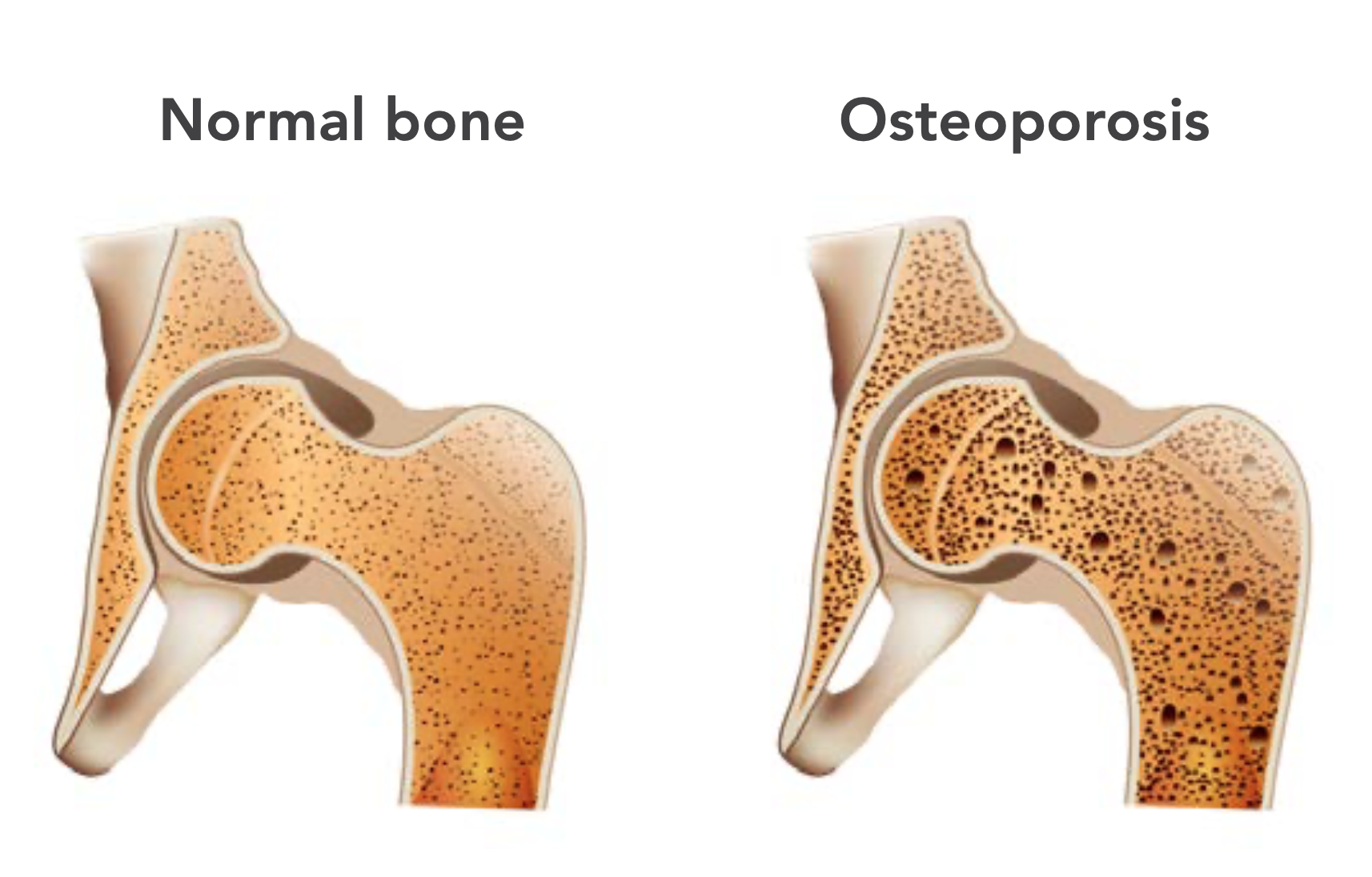Bone Health
Aug 18, 2020
How is bone made?
Normal bone is made up of a mixture of calcium, magnesium and other minerals.
It also contains collagen, a protein that forms the physical framework of bone. Throughout life, bone is constantly being broken down and renewed.
By 17 years of age, 90% of bone growth is complete. This means that childhood and the teenage years are the most important time for bone to be made. From our 30s onwards, more bone is broken down than made, resulting in a gradual decrease in bone strength as we age.
Hormones such as oestrogen play a role in maintaining bone strength. When women go through menopause, there is a significant fall in oestrogen, resulting in rapid bone loss in the years immediately after menopause. This rate of loss slows 4-8 years after menopause.
What is osteoporosis?
When bones lose minerals such as calcium more quickly than the body can replace them, this leads to a loss of bone thickness (also called bone mass or density). With osteoporosis, bones become thinner and in severe cases, even a minor bump can cause a break (fracture).

How do you know if you have osteoporosis?
To assess bone density and osteoporosis risk, your doctor may
- ask questions about lifestyle factors linked to the causes of osteoporosis. These include poor diet, lack of calcium and vitamin D, too many caffeinated (eg coffee, cola) or alcoholic drinks a day, smoking, lack of physical activity, hormone changes, illness, some medications (eg cortisone or thyroxine) and a family history of osteoporosis.
- send you for a specialised X-ray called a DXA scan to test bone density
- complete a fracture risk assessment (FRAX) after a bone density test.

What can you do to protect bone strength?
-
Include in your whole grains, vegetables, legumes (eg lentils, beans), fruit, milk, yoghurt, lean meat, fish, poultry and nuts
-
To meet daily calcium requirements, include: ° two serves of of calcium-rich foods such as broccoli, beans, almonds, tinned salmon or sardines
-
Maintain vitamin D by trying for 10 minutes of sun exposure daily without sunscreen (15-20 minutes in winter) – the main source of vitamin D is sunlight
-
Ask your doctor for a blood test to check your vitamin D levels, so they can advise if you need supplements
-
Weight-bearing exercise, where bones and muscles work against gravity, is the key to good bone health. This could be weights, Pilates, Hiking, Skipping, Jogging.
-
Replace caffeinated drinks with water and herbal teas
-
Drink no more than 10 standard drinks per week and no more than 4 standard drinks on any one day
-
If you smoke, quitting will cut your risk of bone breaks from osteoporosis by half
-
Some medications lead to increased bone density – menopausal hormone therapy (MHT) increases bone density, but its effects last only while you are taking it
-
If you have had an early or premature menopause, you will need regular bone scans to monitor your bone density. Talk to your doctor about whether you may need MHT to reduce your risk of osteoporosis
-
If you have/have had an eating disorder, get regular checks of your bone strength
-
If you exercise to the point where you no longer have periods, have regular checks of your bone strength and speak to your doctor about oral contraceptive pills and/or MHT
-
If you have an illness, or are taking medication that increases your risk of osteoporosis, discuss the possible effects with your doctor and have regular testing of bone density. Medications that might affect bone density include long-term corticosteroid medications used to treat asthma, rheumatoid arthritis and Crohn’s disease, or thyroxine for hypothyroidism
-
Tell your doctor if a family member has osteoporosis
Your peak bone mass is laid down by the time you are 30. After that, you are using up your store of bone strength. It’s important to maintain good bone health with the right amount of calcium, vitamin D, a nutritious diet and regular physical activity. See your doctor to discuss bone health if you have any questions or concerns.
P.S This information is designed to be informative and educational. It is not intended to provide specific medical advice or replace advice from your medical practitioner.







